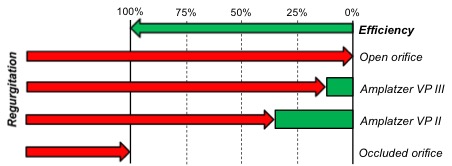improving the efficacy of transcatheter valve implantation by reducing paravalvular leakage
Transcatheter aortic valve replacement (TAVR) procedures represent the treatment of choice for high risk patients. Despite the continuous evolving of the technology, TAVR still present recurrent paravalvular leakage (PVL), which impacts on long-term survival.
In this project, run in collaboration with Dr Andrea Colli and the University of Padua, we have examined the efficacy of the different strategies adopted to treat PVL, including heart pacing, post-dilatation and percutaneous occlusion with vascular plugs developed for other purposes.
Our study has reported the clinical inadequacy of these techniques, questioning the use of off-label devices to achieve an effective or substantial reduction in PVL without compromising the structural integrity of the valve implant. 

In collaboration with our partners in Padua, we are now developing a novel device specifically designed for the post-implant sealing of transcatheter valves. The device will be positionable percutaneously into the detected gaps between the prosthetic valve and the surrounding tissues, resulting in their occlusion and substantial reduction of paravalvular leakage.
The prosthetic component is being assessed in terms of safety and efficacy by numerical and experimental in vitro and in vivo models. The device has the potential to make a striking impact on the medium and long-term efficacy of transcatheter valve implantation, and on the expansion of the benefits of this treatment to lower risk patients.
 Close
Close








